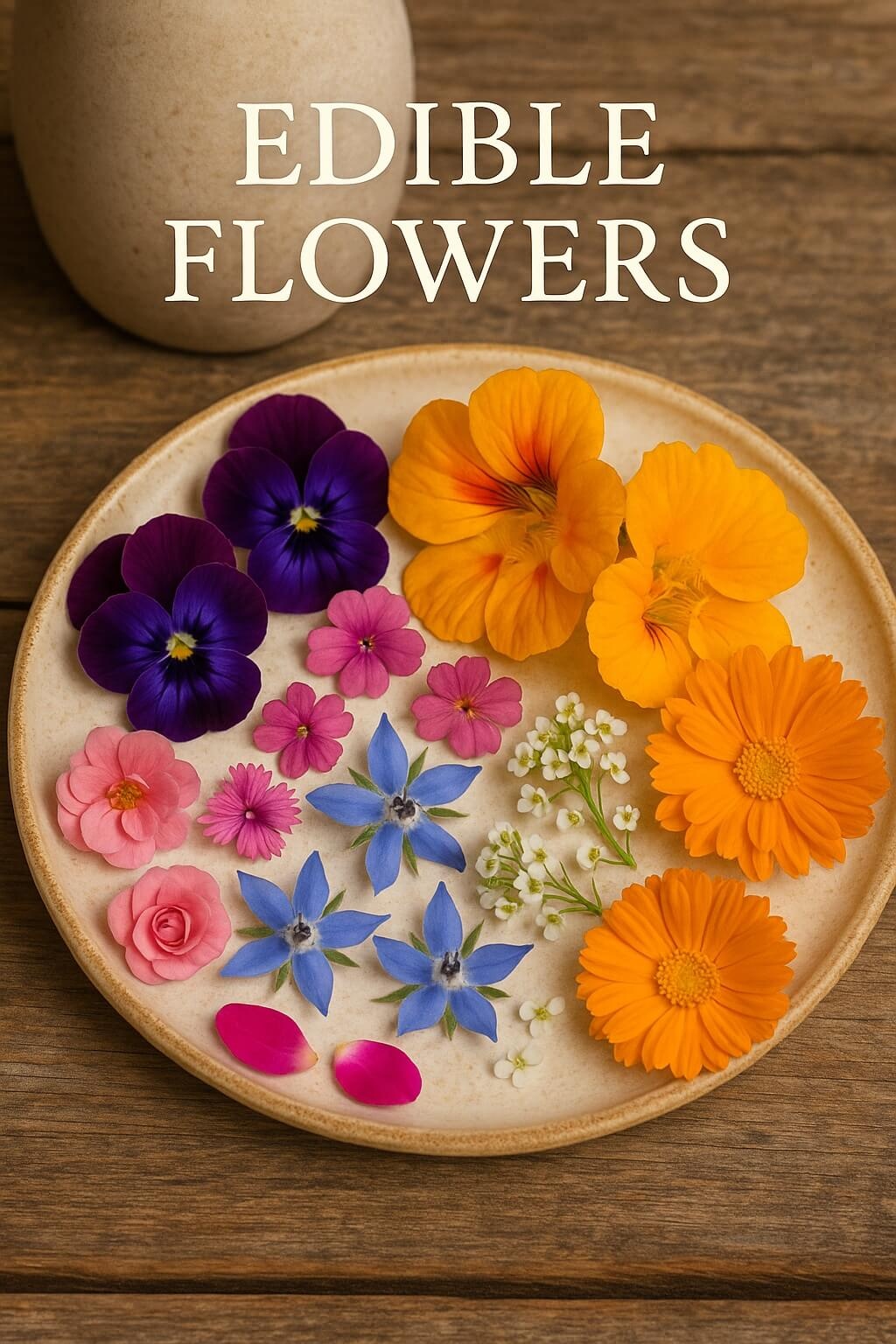Edible flowers
- Posted on
- By Annelies
- 0

What are edible flowers? Which flowers are edible? What do different flowers taste like? Can you pick edible flowers yourself? Everything you want to know about edible flowers.
Edible Flowers: Which Flowers Can You Eat and How Do You Use Them?
Edible flowers are a surprising and flavorful addition to your dishes. You may have seen them in a restaurant, as colorful garnishes on salads or desserts. But did you know you can also pick or grow these flowers yourself? In this blog, you’ll learn all about flowers you can eat, their flavors, and how to use them in the kitchen.
What Are Edible Flowers?
Edible flowers are types of flowers that are safe to consume. They are not only beautiful but also add aroma, flavor, and color to salads, desserts, drinks, and even main dishes. Not all flowers are edible—some are even poisonous—so it’s important to know exactly which ones are safe. For example, did you know that cauliflower, artichoke, and broccoli are all flower buds?
Which Flowers Are Edible?
There are countless flowers you can eat. Below is an overview of popular edible flowers and their flavors:
- Violets (Viola) – Mild, slightly cucumber-like. Perfect in salads.
- Anise Hyssop (Agastache foeniculum) – Sweet and anise-flavored. Great in teas and desserts or for flavoring oils and vinegars.
- Roses (Rosa) – All roses are generally edible if not sprayed with chemicals. Floral and slightly sweet flavor. Ideal for desserts.
- Lavender (Lavandula) – Strong, herbal, and intense flavor. Use sparingly in cookies or savory stews.
- Zucchini Blossoms (Cucurbita pepo) – Firm and decorative. Often stuffed and baked.
- Elderflower (Sambucus nigra) – Sweet and floral flavor. Delicious as syrup or fried.
- Nasturtium (Tropaeolum majus) – Peppery flavor similar to arugula. Great in salads and pestos.
- Chive Blossoms (Allium schoenoprasum) – Mild onion flavor. Nice in savory dishes and salads.
- Borage (Borago officinalis) – Fresh cucumber flavor and crunchy texture. Good with fish and in drinks.
- Cornflower (Centaurea cyanus) – Lightly floral. Used in teas, desserts, butter, or fish dishes.
- Marigold (Tagetes tenuifolia ‘Orange Gem’) – Spicy with citrus notes. Surprisingly tasty in salads, omelets, fish, or potatoes.
- Sweet William (Dianthus barbatus) – Clove-like flavor. Nice with salads and desserts.
How Do You Use Edible Flowers?
Edible flowers can be used in many ways. Their delicate petals are best enjoyed raw and are at their freshest when used soon after picking. Here are some ideas:
- Sprinkle flowers over salads for extra color and flavor.
- Add flowers to homemade syrups, jams, or butter.
- Use flowers in a batter for frying, such as elderflowers.
- Create festive drinks with flower petals in lemonade or cocktails.
This way, you can easily make a special and festive dish.
Can You Pick Edible Flowers Yourself?
Yes, you can pick flowers yourself, but be careful:
- Only pick flowers you are 100% sure are edible.
- Do not use flowers that have been sprayed with pesticides.
- Choose flowers from your own garden or from trusted organic growers.
- Avoid flowers from roadsides or unknown areas as they may be contaminated.
How Do You Store Edible Flowers?
- Store flowers in a closed container with a piece of kitchen paper at the bottom.
- Keep them in the refrigerator, where they will stay fresh for 1 to 2 days.
- Use the flowers as fresh as possible — that’s when they look and taste best.
Summary: Why Choose Edible Flowers?
- They add color, aroma, and flavor to any dish.
- They are surprisingly versatile: from salad to dessert.
- You can grow, pick, or buy them from specialty shops.
- A fun and healthy way to brighten up your meals.
Soon you’ll be able to enjoy not only the colorful
beauty of your garden but also its flavors on your plate.
Bon appétit!
Disclaimer
Please note: Not all flowers are edible. Some flowers can be toxic or cause allergic reactions. Always verify that the flower is safe for consumption and make sure it has not been chemically treated. This blog is for informational purposes only. Using edible flowers is at your own risk. We cannot be held responsible for any damage or health issues that may arise.

Comments
Be the first to comment...